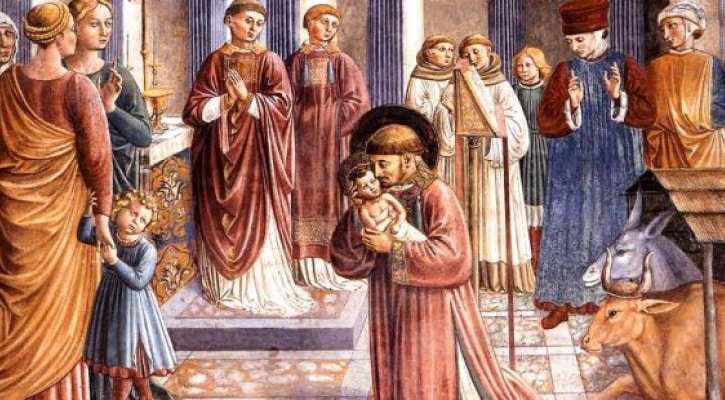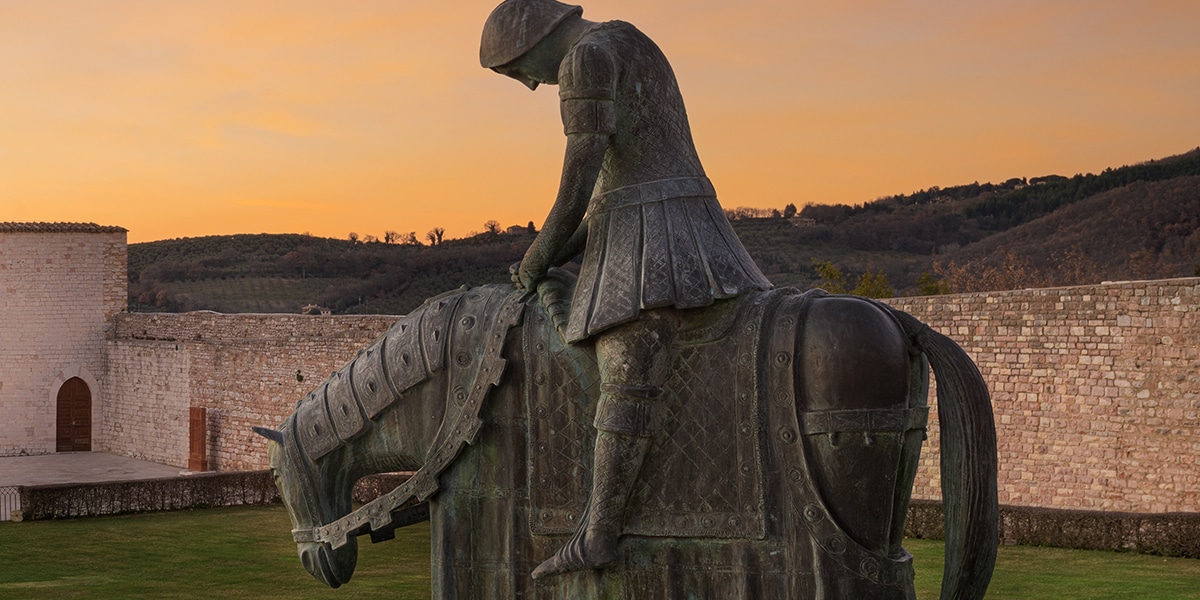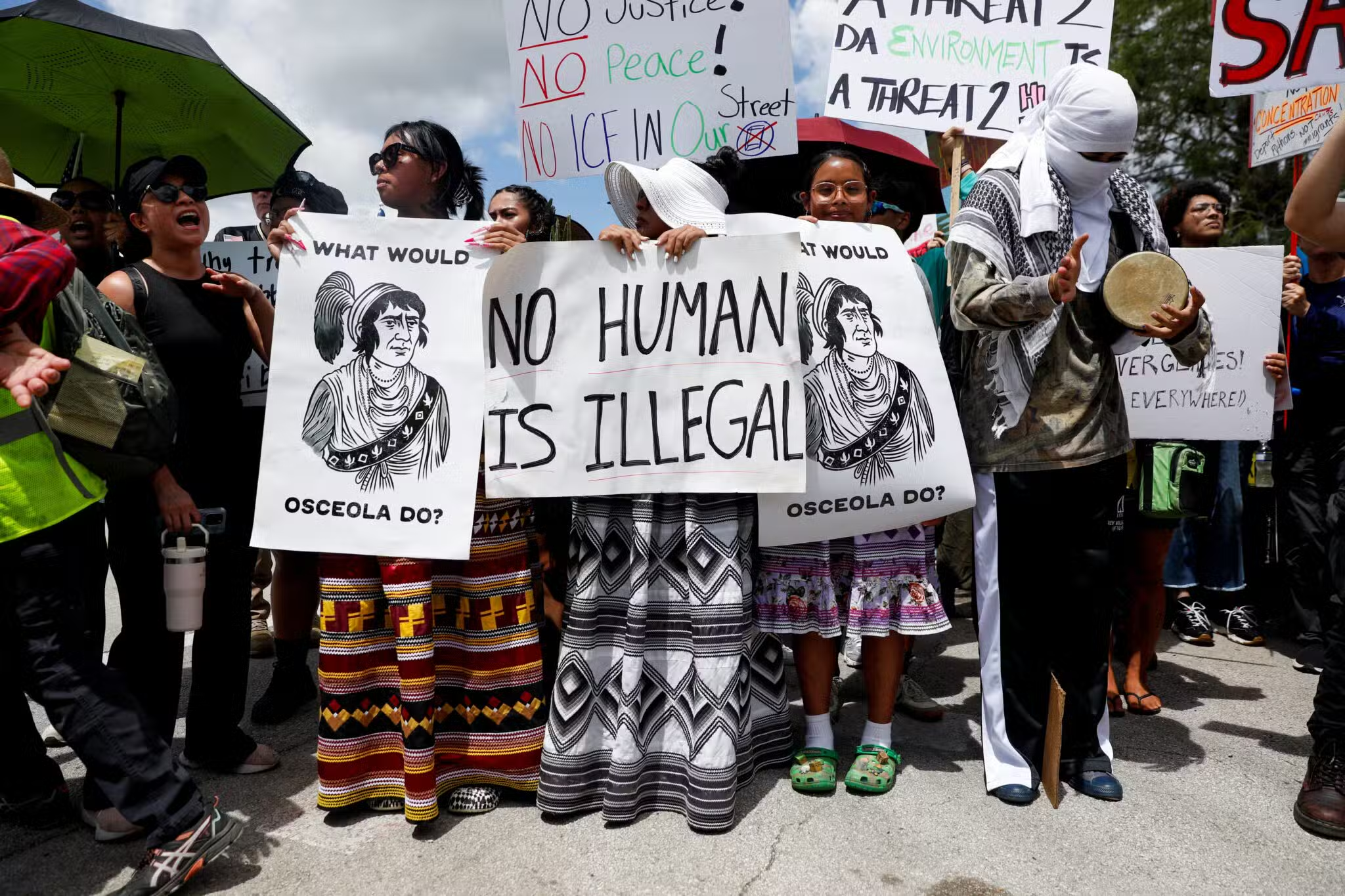Christmas was 15 days away. Saint Francis was staying at a hermitage at Fonte Columbo. He had just come from Rome—the last time, for he would die in three years—where the pope had approved his Rule. The brief future would be filled with pain, even the pain of the wounds of Christ.
How to celebrate Christmas? He remembered his visit to the Holy Land, to Bethlehem. Why not? A kind of replica of the manger there. There was a cave in Greccio….
He had a good friend, Giovanni (John) Vellita, whom he had met on one of his preaching tours. John was a military man, lord of Greccio, just two miles away. John had fallen under the spell of Francis, had renounced all worldly honors and was trying to live a life imitating that of Francis as well as he could.
Francis, with the assurance of friendship, sent word: “If you want to celebrate the Feast of the Lord at Greccio, hurry and diligently prepare what I tell you. For I wish to recall to memory the little child who was born in Bethlehem. I want to set before our bodily eyes the hardships of his infant needs, how he lay in the manger, how with an ox and ass standing by he lay upon the hay.”
John began immediately. People prepared torches and candles to light up the night. The manger was prepared in the cave, and the ox and ass brought in. When Francis came to the friars’ hermitage, he was delighted.
The great evening arrived. People began to come in procession, carrying their torches and candles. The woods rang with their song. They were rediscovering the joy of childhood.
Today, in Greccio, one can still see the stone—perhaps three feet high and two feet wide—on which the hay was placed. It has a brownish gray top and bottom, with a band of gray in the center. The top has a rough, shallow, V-shaped indentation. Here the carved image of the baby was laid. There were no figures of Joseph and Mary, just the two animals.
As the villagers and friars crowded around, a priest began the Mass. Francis gave the sermon. His biographer, Thomas of Celano, Francis’ contemporary, writes: “The saint of God stood before the manger, uttering sighs, overcome with love and filled with a wonderful happiness….He sang the Gospel in a sonorous voice, a clear and sonorous voice, inviting all to the highest rewards. Then he preached to the people standing about and spoke charming words concerning the birth of the poor King, and the little town of Bethlehem….When he spoke the name ‘Child of Bethlehem’ or ‘Jesus,’ his tongue licked his lips, relishing and savoring with pleased palate the sweetness of the words.”
The accounts do not say whether the child was a living baby or a carved figure. It was probably the latter, for it is recorded that at least one of the observers “saw the infant come alive.”
Francis’ Vision
The simple celebration was not the first time the birth of Jesus was celebrated in a dramatic way, as we shall see. But Francis brought to the scene a vision that saw more than the pleasant tableau we now have.
As quoted above, he wanted to show the hardships Jesus suffered already as an infant. In the daring phrase of St. Paul, he saw the emptying of the glory of the Son of God, born of a gentle mother but still thrown upon a stony and resisting world.
Francis wanted to realize and help people realize exactly what God had done for his people, and “how poor he chose to be for our sakes.” Francis himself had chosen the bitter poverty of being on the margin of society, with no resources or security. He saw the Son of God placing himself, as it were, on the margin of divinity.
He saw a truly human Jesus, not a divine being hiding behind a deceptive physical facade. The humility of the Incarnation and of the Cross was his constant preoccupation. He wanted to think of nothing else—Bethlehem and Calvary.
His life centered, then, around poverty and humility, sister virtues. He told his friars not to be ashamed to beg, “since God himself became poor for our sakes….Poverty is the heritage which our Lord Jesus Christ has acquired for us.”
Thomas of Celano says, “He would often meditate on the desolation of Christ and his holy mother with tears, and he maintained that poverty was ‘the queen’ of the virtues, as she had become so radiantly manifest in the King and his mother.”
Francis’ love and compassion for the suffering and Passion of Christ were so deep that he no longer cared about his own pain. In the year after this celebration, he would be so identified with the suffering Christ that the five wounds appeared in his body.
Spread of the Devotion
Before Francis’ time, as early as the fifth century, the Basilica of St. Mary Major in Rome had a small oratory built like the cave of Bethlehem. The basilica’s second title was “St. Mary at the Crib.” The pope’s first Mass of Christmas was offered there.
Christmas plays, imitating those of Easter, probably grew up in the 11th century. And in the century before Francis lived, ecclesiastics dressed up as the midwives, Magi, shepherds and other persons of the Christmas story, as well as live animals, are already recorded in descriptions of the liturgical drama, the Spectacula Theatricalia, as participants in Christmas celebration.
But it was Francis who thrilled the Catholic world with his simple and fervent celebration. After his death in 1226, the custom of having the crib at Christmas spread widely through Europe.
The New Catholic Encyclopedia (Volume IV, page 448) says: “By the dawn of the baroque era, the crib setting had become an intricate scenic landscape, and numerous secular figures were now added to those of the Holy Family, shepherds and Magi. Crib-making thus developed into an important folk art, especially in Portugal, in the Tyrol, and most of all in the Kingdom of the Two Sicilies, where it was actively patronized by Charles III de Bourbon (d. 1788).
“The home crib became popular in Catholic Europe after 1600, owing, it is said, to the efforts of the Capuchins. Except for the crib (the ‘putz’) of the pietist Moravians, manger-building was not originally adopted by Protestants. Pre-Reformation England had had its own crib custom, that of baking the Christmas mince pie in an oblong manger shape to cradle an image of the Child. The British Puritans, therefore, in outlawing Christmas, declared particular war on mince pie as ‘idolatrie in crust.’”
Francis would smile at our nice varnished cribs, though he would bless any home that has one. Probably he would prefer those set up outdoors with live animals. And if he were to stand by one and preach today, he might say something like this:
“Look deeper than this pleasant scene. See your God become your food for eternity in a feeding place for animals. See the simple bands wound around the helpless baby, not the embroidered dress. See a man and woman wearing the clothes of the poor. See and smell the animals. Feel the cold and dirt of the cave, lighted only by a little fire. And adore your God, who took a human heart that could know the greatest love and the sharpest pain, arms that could embrace the sinners, the neurotics, the lepers, and hands that could touch cheeks running with tears, and be pierced with nails. Adore your poor and humble God.”









2 thoughts on “Saint Francis and the Crib”
Love it. Patti ofs
I did not know the connection of St. Francis and the crib scene. It was very informative and inspirational.
Loved it.